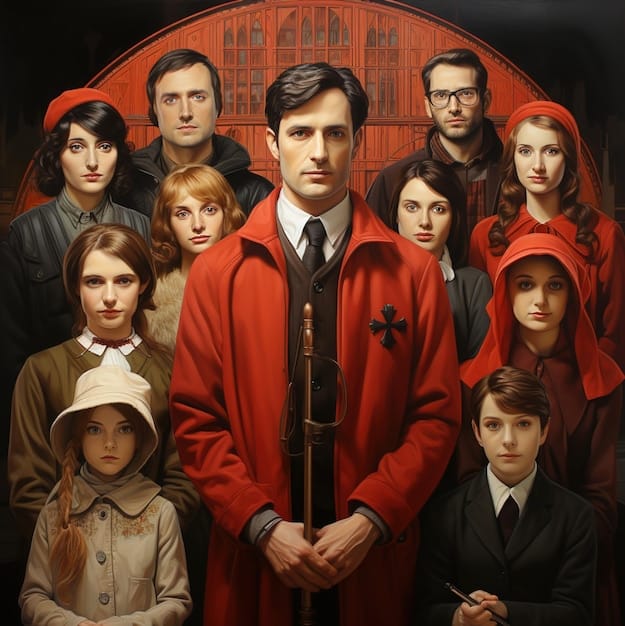From Page to Screen: A Comparison of Adaptations in Drama Reviews

From Page to Screen: A Comparison of the examines how literary works are transformed into visual mediums, analyzing the successes, failures, and unique artistic choices involved in adapting dramas for film and television.
The allure of adapting literary masterpieces for the screen has captivated audiences for generations. Today, we delve into From Page to Screen: A Comparison of the various adaptations that dominate the realm of drama, exploring the artistic liberties, challenges, and rewards of translating textual narratives into cinematic experiences.
The Essence of Adaptation: Staying True to the Core
Adapting a drama from page to screen is more than just a simple translation; it’s about capturing the essence of the story while leveraging the unique capabilities of film or television. A successful adaptation honors the spirit of the original work.
Understanding the Source Material
Before embarking on the adaptation journey, a deep understanding of the source material is crucial. This involves analyzing themes, character motivations, and the overall narrative structure. How does the adaptation team ensure they grasp the author’s intent?
Maintaining Thematic Integrity
One of the biggest challenges in adapting a drama is maintaining its thematic integrity. The core messages and themes should resonate as powerfully on screen as they do in the book. What techniques can filmmakers use to achieve this resonance?

Consider these key aspects of thematic integrity:
- Character Arcs: Preserving the development and transformation of key characters.
- Central Themes: Ensuring the exploration of core themes such as love, loss, or redemption remains impactful.
- Narrative Structure: Respecting the pacing and key plot points of the original story.
Maintaining thematic integrity is a balancing act, requiring respect for the original work and creative license to make the adaptation work for a new medium. How do adaptations handle conflicting interpretations of the source material?
The Visual Language of Cinema vs. The Written Word
Cinema and literature are distinct mediums, each with its own strengths and limitations. Adapting a drama requires understanding how to translate the descriptive language of the written word into the visual language of film.
Visual Storytelling Techniques
Film relies heavily on visual storytelling techniques to convey meaning. Cinematography, set design, and costume design all play a vital role in bringing the story to life. What are some examples of visual storytelling that enhance an adaptation?
Dialogue Adaptation
Adapting dialogue from a novel to a screenplay requires careful consideration. Long, descriptive passages must be condensed into concise, impactful lines. How do screenwriters balance authenticity with brevity?
Understanding the differences between visual and written mediums is key to a successful adaptation:
- Show, Don’t Tell: Using visual cues and actions to convey information rather than relying on exposition.
- Visual Metaphors: Employing visual symbolism to represent themes and ideas.
- Pacing: Adjusting the pacing to suit the cinematic experience, often compressing or expanding timelines.
The art of visual language is what separates a good adaptation from a great one, often elevating the story beyond its literary origins. What classic adaptations particularly excel in visual storytelling?
Casting Choices: Bringing Characters to Life
Casting is a critical component of any successful drama adaptation. The actors must not only physically resemble the characters as described in the book, but also embody their personalities and emotions.
The Ideal Actor
Finding the ideal actor for a role involves more than just a physical resemblance. They must also possess the acting skills to portray the character’s inner life convincingly. How do casting directors find these actors?
Actor Interpretation
Actors often bring their own interpretations to a role, which can sometimes deviate from the author’s original intent. How do directors guide actors to stay true to the character while allowing them to bring their own creativity to the role?

Consider the importance of casting with these points in mind:
- Chemistry: Ensuring the actors have believable chemistry with each other.
- Authenticity: Seeking actors who can authentically portray the character’s background and experiences.
- Star Power: Balancing the need for recognizable stars with the suitability of the actor for the role.
Casting choices can make or break an adaptation. A well-cast actor can elevate the character and make the story more compelling. What unexpected casting choices have proven surprisingly successful?
Artistic Liberties: When and How to Deviate
While staying true to the core essence of a drama is important, adaptations often require artistic liberties to make the story work in a new medium. Knowing when and how to deviate from the source material is a delicate balance.
Necessary Changes
Some changes are necessary to accommodate the limitations of film or television. For example, subplots may need to be cut, or characters may need to be combined. What are some common types of necessary changes?
Creative Interpretation
Other changes are made for creative reasons, such as updating the setting or reinterpreting a character’s motivations. How far can an adaptation deviate from the source material before it loses its identity?
Artistic liberties can be used to:
- Modernize the Story: Making the story more relevant to contemporary audiences.
- Streamline the Plot: Removing unnecessary details to keep the story moving.
- Enhance Dramatic Impact: Adding scenes or dialogue to heighten the emotional impact of the story.
Artistic liberties are a tool that, when used judiciously, can enrich the adaptation. When do artistic liberties enhance, and when do they detract from, the story?
Fan Expectations vs. Creative Vision
Adapting a beloved drama comes with a built-in audience of fans who have strong opinions about how the story should be told. Balancing these expectations with the creative vision of the filmmakers is a significant challenge.
Meeting Expectations
Filmmakers often feel pressure to meet fan expectations, but trying to please everyone can lead to a watered-down adaptation. How do filmmakers navigate this pressure while staying true to their own vision?
Controversial Changes
Changes that deviate significantly from the book can be met with criticism from fans. How can filmmakers justify these changes and convince fans that they are in the best interest of the story?
Effective strategies for managing fan expectations include:
- Transparency: Communicating with fans about the adaptation process and explaining the reasons behind certain choices.
- Respect: Showing respect for the source material and its fans.
- Originality: Offering a fresh and unique take on the story while staying true to its core elements.
Balancing fan expectations and creative vision can be a tightrope walk. When should filmmakers prioritize fan wishes, and when should they trust their own instincts?
The Success Metrics: Critical and Commercial Reception
The success of a drama adaptation is often measured by its critical and commercial reception. A successful adaptation is praised by critics and embraced by audiences.
Critical Acclaim
Critical acclaim indicates that the adaptation has successfully captured the essence of the source material and translated it into a compelling cinematic experience. What are the key factors that contribute to critical acclaim?
Box Office Success
Box office success demonstrates that the adaptation has resonated with a wide audience and generated significant revenue. How important is box office success compared to critical acclaim?
Metrics for evaluating an adaptation’s success include:
- Reviews: Positive reviews from reputable critics.
- Awards: Recognition from film and television awards ceremonies.
- Audience Reception: Positive feedback from viewers, measured through surveys and social media.
Ultimately, the success of an adaptation depends on its ability to connect with audiences and leave a lasting impact. How do different audiences weigh critical acclaim versus commercial success?
| Key Point | Brief Description |
|---|---|
| 📚 Source Material | Deep understanding crucial for thematic integrity. |
| 🎬 Visual Language | Translating written word to visual storytelling. |
| 🎭 Casting Choices | Actors embodying character personalities. |
| 🎨 Artistic Liberties | Deviating to modernize or enhance the story. |
Frequently Asked Questions
▼
A faithful adaptation succeeds by honoring the core elements of the source material—themes, characters, and plot—while still using the unique capabilities of the cinematic medium to enhance the story’s impact.
▼
Appeasing fans is important but should be balanced with the creative vision of the filmmakers. Respecting the source material and offering fresh perspectives can lead to a more satisfying experience.
▼
Common challenges include translating descriptive language into visual storytelling, condensing long narratives, and making artistic liberties without alienating fans of the original work.
▼
Casting choices are crucial as actors bring characters to life. The ideal actor should not only physically resemble the character but also embody their personality and emotions convincingly on screen.
▼
Visual effects can enhance realism and bring fantastical elements to life. They should be used to compliment the story, not overshadow it. Good effects support plot and character development.
Conclusion
The journey From Page to Screen: A Comparison of the adaptations reveals the intricate dance between honoring the original work and creatively reimagining it for a new medium. The most successful drama adaptations are those that strike a harmonious balance between staying true to the core essence of the story and leveraging the unique strengths of film and television.





